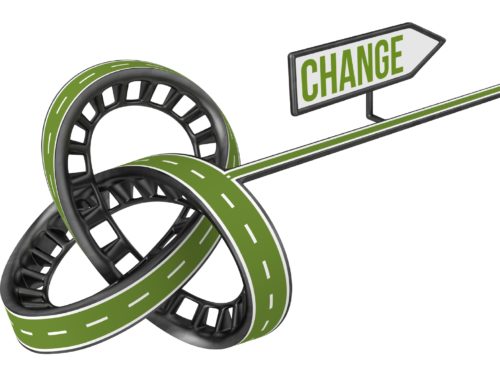From Joe Calloway:
In my 30+ years of working with leaders of organizations of every description imaginable, I’ve discovered a couple of truths about leadership and employees.
One is that when a leader reaches the point where an employee needs to be fired, that leader will tell you that he or she knew it needed to be done a long time ago and wish the hard decision had been made much earlier. This is as much for the employee’s sake as for the organization’s. Keeping people in a place where they don’t fit isn’t doing them any favors.
Another truth I’ve learned is that a great way to evaluate your present employees is to apply this question to each one: If this person didn’t already work here, would I hire him or her today? If the answer is no, well, there’s clue for you that something’s out of whack and maybe a conversation is in order.
“Fixing” an employee can sometimes mean “fixing” the leader or manager. If you are being unclear about expectations, aren’t giving adequate support or resources, or have created a toxic culture – fix yourself and see what a difference it can make in your employees. For the “how to” – I’ll need another two hundred words. At least.
Joe Calloway helps great companies get even better. www.JoeCalloway.com
From Mark Sanborn:
You can’t fix an employee, but you might be able to fix his or her performance.
Common sense and a good policy manual will clarify the majority of situations when an employee should be fired, but there are times when you need to use judgement and intuition.
If an employee has been insubordinate deliberately and frequently, there’s little sense in trying to change or fix their performance.
Ask yourself these questions to determine if fixing is the best course of action:
- Does the employee show remorse for poor performance?
- Is he or she receptive to the fix—suggestions and coaching—you feel necessary to change?
- Are they quick to implement the fix?
- Are you seeing positive improvement and results that prove progress?
Firing is likely warranted when:
- The employee shows lack of concern for mistakes or poor
- They resist or resent feedback and suggestions
- They pay lip service to changing but don’t demonstrate
- The conversation around the problem occurs more than once (or worse, repeatedly).
Don’t fire out of anger, and think carefully about the consequences to your organization and the employee. At the same time realize that fixing isn’t always an option.
Mark Sanborn is president of Sanborn & Associates, Inc., an idea studio for leadership development. He is an award-winning speaker bestselling author of books including, The Fred Factor. For more information and free resources, visit www.marksanborn.com.
From Scott McKain:
You can coach people. You can help people. You might inspire or motivate people. You can’t fix people.
A desire to “fix” someone else is frequently rooted not in their problems, but in yours. It springs from the compulsion to make others conform to your standards, because you’re uncomfortable with things not being done the way that you choose.
As you might imagine, in the profession of business speaking and writing that the Five Friends share, we’re around others in our industry that have an almost genetic need to tell people how to do their jobs and live their lives. They perceive that “fixing” people will inspire their audience to admire and appreciate the one who gives advice. For some, it’s practically to the point of a sickness – a consistently sad, desperate attempt to receive approval from others. Instead, we end up resenting their efforts. Make sure your desire to “fix” an employee isn’t a “you” problem, instead of them.
In the real world, no one wants to be fixed. They want to be coached, helped, inspired, and motivated.
If you can’t lead them to that point – or if they choose not to participate – then, it’s time to fire them.
Scott McKain teaches how organizations and individual professionals can create distinction in their marketplace, and deliver the “Ultimate Customer Experience®.” For more information, visit www.ScottMcKain.com.
From Randy Pennington:
The only time you immediately fire an employee is when they have done something so severe that they haven’t earned the right to a second chance. The HR people call these conduct infractions. They include things such as theft, serious safety violations, gross misconduct, or abusive language.
The rest of the time you help employees fix themselves. That means bringing the problem to their attention; providing clear expectations; giving them training and support if appropriate; and then holding them accountable for meeting your expectations. These situations include chronic attendance and job performance problems. But, they also include times when the person just doesn’t fit with your culture.
The most difficult person you will ever fire is the hard worker who can no longer do the job. You should do everything in your power to help this person – maybe even carrying them for a while. But if all else fails, you have to take action.
Firing someone should not be taken lightly or done illegally. The replacement costs range from 2 to 12 months of salary depending on the sophistication level of the job. But, firing someone can be the best solution for removing toxic waste that prevents excellent performance.
Randy Pennington helps leaders deliver positive results in a world of accelerating change and disruption. He is an award-winning author, speaker, and consultant. To find out more, go to www.penningtongroup.com.
From Larry Winget:
By the time most managers get around to firing someone, it’s too late. You have to “fix” employees when the infraction happens the first time. You don’t let it slide until it grows into something unfixable, which is typically what happens. Bad habits are hard to break which means nothing should be tolerated/ignored long enough for it to become a bad habit. But that requires that the manager have true dedication to the company, the culture, the customer, the employee and the other workers. It requires involvement and awareness and a willingness to get their hands dirty early and often.
Most employee issues can be fixed when detected and addressed early. And too many potentially great employees are wasted when the issue isn’t addressed and corrected early.
If this sounds a lot like shutting the barn door after the horse is out, it is. If management hasn’t done their job with good training, clear expectations and constant reinforcement, then the options are few and the employee usually must be fired.
If the employee is a long-time employee and messes up, spend the time to figure out what the issue is. It’s amazing what can be accomplished with old-fashioned two-way conversation.
Larry Winget, the Pitbull of Personal Development©, is a six-time NYT/ WSJ bestselling author, social commentator and appears regularly on many national television news shows. To find out more, go to www.LarryWinget.com.





